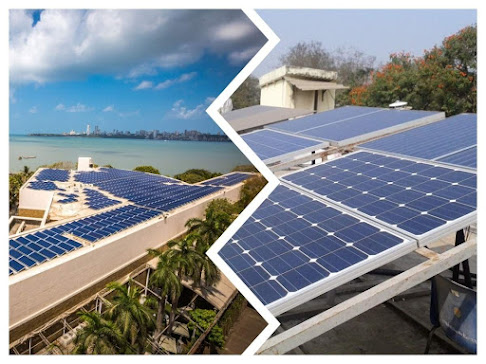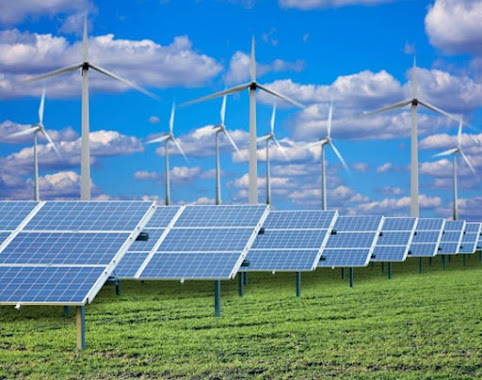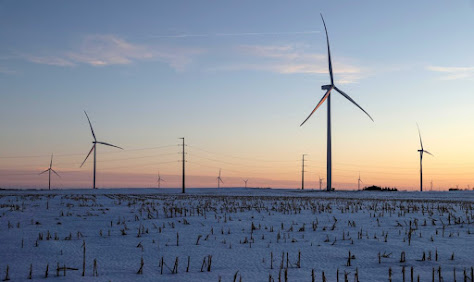New
Delhi: According to a report by the International Energy Agency, unlike many
other parts of the energy sector, such as the oil, gas, and coal crisis,
renewable energy is going strong this year. (IEA) said on Tuesday. And
Powered
by China and the US, new growth in renewable energy capacity worldwide took
place to record levels of around 200 GW this year, The IEA’s Renewal 2020
Report. This increase - representing approximately 90 percent of the total
expansion in total electricity capacity globally - is led by wind, hydropower,
and solar PV. Wind and photovoltaic
additions are designed to leap 30 percentage in every US and
There
was to be a strong development there too. According to the report, India and the European Union will be the usage
of strain in the lower back of a documented boom of round 10 percentage of
world renewable potential additions subsequent year. This is as a result
of delayed projects, where construction and supply chains were disrupted by the
epidemic, and development occurred in markets where the Covid project's
pipeline was strong.
IEA Executive Director Fatih Birol mentioned that
India is expected to be the largest contributor, with an annual expansion in
 |
| Renewable Energy |
At the same time, shares of publicly listed
renewable tools producers and challenge developers outperform the most exotic
stock market indices and the regular strength quarter. By October, The value of shares of
solar companies worldwide had more than doubled since December. 2019.
However,
policymakers still need to take steps to support the strong momentum behind renewable.
Key forecasts from the IEA report, Pro in major markets the termination of the
incentives, and the resulting uncertainties lead to a small change in renewable
capacity in 2022.
The
major factors influencing the pace of inflation will be policy decisions in
major markets such as
According
to the report, electricity produced by renewable technologies globally will
increase by seven percent in 2020. This increase comes despite five
percent annual decline in global energy demand, the largest since the Second World
War.
Ministry
of Renewable Energy is to expand the scope of the
Now,
besides barren, fallow, and agricultural lands on farmers' pastures and marshy
lands, in addition to solar power plants, solar projects smaller than 500 kW
maybe permitted by the states based on techno-commercial viability is the
statement of the ministry. New and Renewable Energy (MNRE) said.
It
will commission the solar power plant within twelve months from the date of
issue of the selected renewable energy generator (RPG) award letter (LoA) also,
any penalty on RPGs for the reduction in solar power generation by the minimum
fixed capacity utilization factor.
 |
| Rooftop Solar Panels |
As
per the amendments, MNRE will now retain 33 percent of the eligible service charges for nationwide information,
education, and communication (IEC) activities. The order mentions that the
Ministry will approve the quantity sanctioned after the appointment of LoA for
preparatory activities.
50
percent of the eligible service charge for solar pump capacity on Central
Financial Assistance (CFA) for the installation and use of solar pumps by solar
user associations/farmer producing organizations/primary agricultural credit
societies or for cluster-based irrigation systems. (CFA) will be allowed for a capacity of higher than 7.5 HP considering up to 5 HP capacities for each individual in the group.
The eligibility to participate in the centralized tender has also been amended. During the final bid, only the solar pump
and solar panel manufacturers were allowed to participate in the bid, looking
at the quality and post-installation services for the next five years.
During implementation, it is observed
that these manufacturers have less of this field workforce and for this purpose
is dependent on local integrators, which has delayed the installation of solar
pumps, the statement said. To overcome this situation and ensure quality and
post-installation services, it has now been decided to allow the joint venture
of the manufacturer of solar pumps / solar panels/solar pump controllers with
integrators.
The order further states that under a particular category of pumps 10 percent of the total quantity will be allocated
to the lowest bidder in an equal quantity and the remaining amount for all
selected bidders of the same bidder put on the market mode will go. This
assured allocation will bring seriousness and competitiveness to the bid.
Specifications and guidelines related
to testing have also been amended to avoid repetitive and rapid implementation
of the same model. The solar pump specifications were updated by MNRE in July
2019 and are being used for the
As part of the revised guidelines,
Universal Solar Separate bid prices will be invited for solar water pumping
systems with pump controllers (USPC) and subsidies for these pumps according to
the benchmark price of solar pumps without USPC is less than the benchmark value.
 |
| Rooftop Solar Panels |
Standalone photovoltaic
pumps are completely used for 100–150 days in a year and photovoltaic the electrical energy generated at some point in the leisure of the size is no
longer used. To
make effective use of solar energy, it is the USPC, it was proposed to start,
which would not only run water pumps, but also other electrical equipment such
as cold storage, battery charging, flour mills, etc.
The ministry said that the income of
farmers will increase with the establishment of USPC, which is aimed at the
PM-Kusum scheme. The statement said that now that the farmers have got the
solar panels, they will be made available and they will be able to use the
solar energy generated to meet irrigation needs and sell surplus solar power.
The rebate, at a predetermined rate, to
be decided by the concerned State / State Electricity Regulatory Commission
(SERC), will purchase surplus power from them. Under the scheme, pump capacity
up to twice the solar PV capacity is permitted in kilowatts.
Applicable for solarisation
of large-capacity pumps used by water purchaser associations and local/cluster-based
irrigation systems. The
plan's guidelines on the CFA were silent. The Cabinet-Committee on Economic
Affairs approved the PM-Kusum scheme on 19 February 2019.
Also, Read


